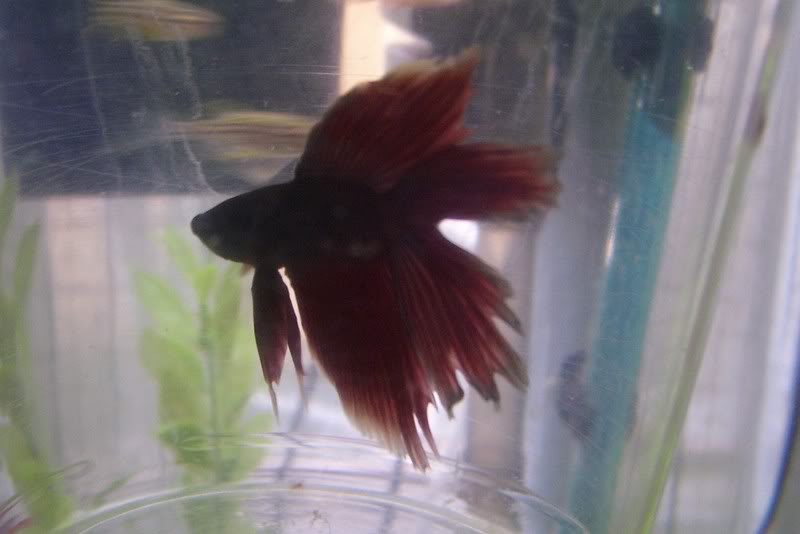OK Great that you want to breed bettas. It is a great feeling to see the little dots wriggle for the first time. check out the IBC website:
http://www.ibcbettas.org/faq.htm AND
http://www.ibcbettas.org/members_sites.htm AND
http://www.majesticbettas.com/.
5.5 gallon is a bit small but it can still be done with some extra preparation. IT will need to be covered. I used plastic wrap. You will need a bigger tank to move the babies to later especially if it is a big spawn. I used a well seasoned sponge filter. Before the filters were cycled, I had an ammonia alert in the tank.
Even for a small spawn, you will need to set up a water changing tank with pretreated and heated water. Rubbermaid containers work great if they have been thorughly cleaned (I use vinegar and then hot water to wipe down any container before use). You can easily set up some sort of drip system from the water tank into the spawn tank for after the babies have been born - just use some air tubing and either a control valve or just tie a knot in the tube.
You specifically asked about water parameters. Male bettas won't spawn in water that another male betta has been in - fresh treated water. They prefer 7.0 pH but with my hard water, it was better that I left it at the high pH than try to adjust it. Water temp at 79 degrees. Add a bit of aquarium salt and some type of fungus guard to pretect the eggs. When I was breeding, almond tree leaves were the rage. I would sometimes use Spawn Aid or a Betta living water additive. It was sort of like baseball, didn't know what worked but if it went well last time, it was then a ritual to be performed each time.
Bettas seem to spawn just before a big rain. It is the air pressure. I never needed to check a weather report because if a rain was coming, the males would be building nests.
I used a floating live breeder trap. Many times, the female would find her own way out and they would be breeding without my knowledge and then I would later find the female back in the trap.
The male and female need to be conditioned with top quality food before breeding so that they will build up strength and she can develop eggs. The female will look full with her egg tube showing. I used frozen brine shrimp and red worms. Some breeders use ground beef heart. All of these can cause constipation if not rotated with a high veggie food. Frozen foods can be purchased at some pet shops but you may have to ask for it.
Before starting the breeding, what will your food source for the babies be? They are too small to eat baby brine shrimp first. Some breeders use vinegar worms. I suggest an easy first food such as infusoria from a drip. This can be made by adding grass to a jug of declorinated water. Or a commercial first food, which can easily spoil the water if too much is used.
If you are planning to hatch baby brine shrimp for them, please write back so that I can offer a few tips. If the babies swallow the egg casings, they develop swim bladder problems and thus are called belly sliders. When I switched hatching methods, I had no more belly sliders.
Good luck!! And don't get discouraged. My first several attempts failed. And then all of a sudden with no reasonable explanation, the spawns began.

